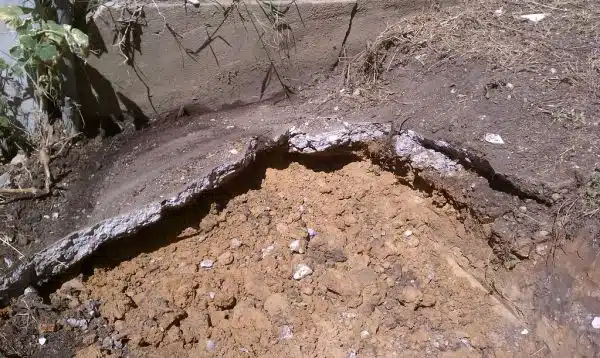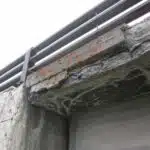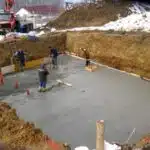Concrete is a versatile and durable material that is commonly used in construction projects. However, there are times when it becomes necessary to break up concrete by hand. Whether you need to remove a section of concrete for repair or demolition purposes, the process can be challenging without the proper tools and techniques.
As a concrete hand demolition specialist, I have encountered numerous situations where breaking up concrete by hand was essential. Over the years, I have refined my approach to this task and developed effective strategies that can help anyone looking to tackle this type of project. In this article, I will share my expertise on how to break up concrete by hand using simple yet efficient techniques that will save you time, effort, and money.
Assessing The Project Requirements
As a concrete hand demolition specialist, I have seen many DIY enthusiasts attempt to break up concrete by hand. While some have been successful, others have found themselves overwhelmed by the sheer volume of work involved. This is why I always recommend that anyone considering breaking up concrete assess their project requirements before beginning.
Assessing time is one of the most important factors when it comes to breaking up concrete by hand. Depending on the size and depth of the slab, it can take anywhere from several hours to several days to complete the job. It’s important to be realistic about the amount of time you’re willing to devote to this task, as well as your level of physical fitness and endurance.
Another crucial consideration is budget constraints. Breaking up concrete can be an expensive undertaking if you don’t plan carefully. You’ll need to factor in the cost of tools, safety equipment, and any professional help you might need. Additionally, if you’re renting equipment or hiring professionals, you’ll need to ensure that your budget can accommodate these expenses. By assessing your project requirements ahead of time, you can avoid unexpected costs and delays down the line.
With an understanding of your project requirements firmly established in your mind, it’s time to move on to gathering the necessary tools for breaking up concrete by hand.
Gathering The Necessary Tools
Before starting the process of breaking up concrete by hand, it is essential to gather all the necessary tools. This will ensure that you have everything at hand and do not need to halt midway to look for any missing items. In addition, tool maintenance is crucial to ensure they are in good working condition.
The first item required is a sledgehammer. It is important to choose the right sledgehammer weight according to your strength and experience. A 10-pound sledgehammer is suitable for beginners, while a 20-pound one is better suited for those with more experience. The second item needed is a pry bar, which helps in removing any loose concrete pieces. Lastly, a steel-toed shoe or boot will protect your toes from accidental injury.
Safety precautions must be taken into consideration before starting any work on breaking up concrete by hand. Always wear protective gear such as safety goggles, gloves, and ear protection when using power tools such as jackhammers and chisels. It is also important to take breaks frequently and stay hydrated during the process of breaking up concrete.
In addition to gathering the necessary tools and taking safety precautions, tool maintenance must be performed regularly. Ensure that all tools are clean and free from rust before use. Sharpen any blunt edges on the chisel using a sharpening stone. Regularly check the handle of the sledgehammer for cracks or damage that could cause it to break during use.
To proceed with breaking up concrete by hand safely and effectively, it is important to gather all necessary tools beforehand and maintain them properly. Safety should always be a top priority, so make sure you wear protective gear and take frequent breaks during the process. In the next section, we will discuss wearing protective gear in detail to ensure your safety while performing this task.
Wearing Protective Gear
Now that you have gathered all the necessary tools, it is time to focus on selecting appropriate gear and wearing it properly. As a concrete hand demolition specialist, I cannot stress enough the importance of wearing protective gear during this process. Concrete can be extremely heavy and dangerous, and without proper protection, you risk injury.
One of the most important pieces of gear you will need is a good pair of work gloves. These will not only provide protection for your hands but also help to give you a better grip on the tools you are using. It is essential to select gloves that fit properly to ensure maximum dexterity and comfort. Ill-fitting gloves can cause discomfort and fatigue, which could lead to accidents.
Another crucial piece of gear you should consider is eye protection. Flying debris from breaking up concrete can easily cause eye injuries if left unprotected. Make sure to choose safety glasses or goggles that meet ANSI standards and fit securely around your eyes. Properly fitting eye protection will shield your eyes from dust, debris, and small particles that may fly up while working.
Creating safe working conditions is vital during any demolition project. In the next section, we will discuss how to create a safe working environment when breaking up concrete by hand. Remember, safety should always be your top priority when engaging in any construction activity.
Creating Safe Working Conditions
As a concrete hand demolition specialist, I have seen firsthand how dangerous this work can be. That’s why creating safe working conditions is of utmost importance. Before starting any job, it’s essential to assess the site and identify potential hazards such as nearby power lines or unstable structures. Once on-site, it’s crucial to establish clear communication channels with all team members to ensure that everyone is aware of the risks involved.
In addition to identifying potential hazards and establishing clear communication channels, it’s vital to take precautions to prevent accidents from occurring. This includes wearing proper personal protective equipment (PPE) such as hard hats, safety glasses, gloves, and steel-toed boots. It also means using caution when operating heavy machinery and following all safety protocols.
Overall, ensuring a safe working environment requires teamwork and constant vigilance. By prioritizing communication, identifying potential hazards, and taking necessary precautions, we can minimize the risk of accidents and injuries on the job site. In the next section, we will discuss how to identify weak points in concrete so that we can approach our demolition work with precision and efficiency.
Identifying Weak Points In The Concrete
Creating safe working conditions is essential when breaking up concrete by hand. It is important to wear appropriate protective gear such as gloves, eye protection, and a dust mask. Additionally, it is imperative to make sure the surrounding area is clear of any obstructions or hazards that could cause injury.
Once you have established a safe work environment, the next step is to identify weak points in the concrete. One way to do this is by checking for cracks. Cracks in the concrete can indicate areas that are already weakened and will be easier to break apart. Another method for finding weaknesses is by tapping on the surface of the concrete with a hammer or mallet. If there are hollow sounds or if the surface feels softer in certain areas, these could be potential weak spots.
After identifying weak points in the concrete, it’s time to start breaking it up into smaller sections. Beginning with small sections allows for better control and reduces the risk of injury. It’s important to use proper techniques such as using a sledgehammer or jackhammer and making sure not to swing too hard or too fast. With patience and persistence, even large sections of concrete can be broken down into manageable pieces for removal.
To begin breaking up concrete by hand, it’s crucial to create a safe working environment and identify weak points in the material beforehand. Starting with small sections allows for better control during demolition while reducing risks associated with heavy lifting and overexertion. By following proper techniques and taking necessary precautions, anyone can successfully break up concrete by hand without incident or injury.
Starting With Small Sections
Before jumping into breaking up a large slab of concrete, it is essential to begin with small sections. By doing so, you can concentrate your effort on one area and ensure that the breaking process is done correctly. This technique allows you to have more control over the situation and reduces the risk of injury.
Breaking techniques are crucial when starting with small sections. One recommended method is using a hammer drill with a chisel bit to create fractures in the concrete surface. Then, use a cold chisel and hammer to break apart the weakened area. Another technique is scoring the surface with a circular saw and then using a sledgehammer to strike along the scored lines until it breaks apart.
Safety precautions should always be taken when breaking up concrete by hand, no matter how small or large the section may be. Before starting work, wear protective gear such as gloves, safety glasses, and earplugs. Also, make sure that there are no electrical wires or pipes running underneath the area you intend to break as this can be extremely hazardous.
Transitioning into the subsequent section about ‘using a sledgehammer,’ this tool is commonly used for breaking up larger sections of concrete by hand. However, before moving onto larger areas, it’s imperative to start with smaller sections first to ensure proper technique and safety measures are taken into account.
Using A Sledgehammer
Starting with Small Sections, as discussed in the previous section, is a crucial step towards breaking up concrete by hand. This technique enables you to have better control and leverage when using your sledgehammer. However, it is important to note that there are specific techniques to follow when using a sledgehammer on concrete.
Firstly, it is essential to wear protective gear such as heavy-duty gloves, safety goggles, and ear protection. Secondly, ensure that the area around you is clear of any objects or debris that might get in the way of your swing. Begin by standing near the edge of the concrete slab and aim for the center of it. Use both hands to grip the sledgehammer and swing it down with force onto the surface of the concrete.
Moreover, as you continue to break up larger sections of concrete, adjust your stance accordingly so that you maintain balance throughout the process. Additionally, be mindful not to overexert yourself as this can result in fatigue and possible injury. By following these safety precautions and sledgehammer techniques, breaking up concrete by hand can be an effective method for small-scale demolition projects.
Transitioning into breaking up concrete with a pickaxe requires a similar approach but with different tools and techniques.
Breaking Up The Concrete With A Pickaxe
As a concrete hand demolition specialist, I have seen people pick up a pickaxe and start swinging away at the concrete without any technique or strategy. This can lead to serious injury and an inefficient use of time. To break up concrete with a pickaxe, it is crucial to use proper technique and avoid injury.
The first step in breaking up concrete with a pickaxe is to wear proper protective gear such as gloves, safety goggles, and a respirator mask. Once you are properly geared up, it’s important to identify the areas that need to be broken apart. Starting from the edge of the slab, aim for the weakest points in the concrete since they will require less force.
Using your dominant hand, grasp the handle of the pickaxe firmly while placing your non-dominant hand on top of it for support. Keep your feet shoulder-width apart and swing the pickaxe down with controlled force. Repeat this motion until you have created cracks in the area you are working on. By using efficient and effective methods with proper technique, you can safely break up concrete by hand without causing injury or wasting time.
This method may not work for all types of concrete slabs, so another option is applying force with a pry bar.
Applying Force With A Pry Bar
- When prying action is needed to break up concrete by hand, a pry bar can be used to apply force to the surface in order to break it apart.
- Hammering action is another effective way to break up concrete by hand, as it can be used to break the concrete by delivering a hard blow to the surface.
- Careful and precise placement of the pry bar is essential for successful concrete hand demolition, as it can allow for the application of maximum force in the safest way.
- When executing hammering action, it is important to use the right tools for the job, as the wrong tools can cause damage to the surrounding area or to the tool itself.
Prying Action
Using leverage is a crucial technique when it comes to breaking up concrete by hand. A pry bar is one of the most effective tools that can be used for this purpose, as it allows you to apply force to specific areas of the concrete where it is needed most. By using a pry bar, you can create a prying action that helps to break up the concrete more easily.
When using a pry bar to break up concrete, it is important to wear protective gear at all times. This includes safety glasses or goggles, gloves, and sturdy work boots. Concrete can be sharp and jagged, and flying debris can pose a serious hazard if you are not properly protected. By wearing the appropriate gear, you can reduce your risk of injury and ensure that you are able to work safely and efficiently.
In conclusion, applying force with a pry bar is an effective way to break up concrete by hand. Using leverage allows you to create a prying action that makes the task easier and more manageable. Additionally, wearing proper protective gear is essential for staying safe while working with concrete. By following these tips and techniques, you can successfully break up concrete by hand without putting yourself at unnecessary risk.
Hammering Action
When it comes to breaking up concrete by hand, a pry bar is a tool that can be used effectively with the right techniques. Another technique that can be utilized when applying force with a pry bar is the hammering action. This technique involves using the pry bar to strike the concrete repeatedly in order to break it up into smaller pieces. By combining leverage and hammering action, you can make the process of breaking up concrete easier and more efficient.
To use the hammering action with a pry bar, it is important to hold the tool firmly and strike the concrete at an angle. This will help to create more force with each blow, making it easier to break up larger pieces of concrete. It is also important to avoid hitting the pry bar directly on its tip, as this can cause damage or breakage over time.
While using techniques for hammering with a pry bar, it is crucial to take precautions in order to avoid injuries. Protective gear such as safety glasses or goggles, gloves, and sturdy work boots should always be worn while working with concrete. Additionally, it is important to take breaks frequently and avoid overexertion in order to prevent strain or injury. By following these tips and utilizing proper techniques for hammering, you can successfully break up concrete by hand without putting yourself at unnecessary risk of injury.
Removing Debris
Once the concrete has been successfully broken up, there will be a significant amount of debris left over. It is essential to remove this debris promptly and efficiently to avoid any accidents or injuries. Debris removal should be done with care and precision to ensure that everything is cleaned up properly.
To dispose of the debris safely, it should be placed in a designated container, such as a dumpster or trash can. It is important not to overload these containers, as the weight of the debris can cause them to tip over or become unstable. Additionally, any protruding materials should be removed before disposal to prevent injury during transport.
Before starting the debris disposal process, it is crucial to take appropriate safety precautions. Heavy-duty gloves and boots should be worn at all times when handling any sharp objects or hazardous materials. Eye protection is also recommended to avoid any flying debris that could cause eye damage.
In summary, removing debris after breaking up concrete by hand requires proper safety precautions and careful disposal methods. By following these guidelines and taking care during the cleanup process, you can ensure that everything is cleaned up safely and efficiently.
Next, we will discuss utilizing a jackhammer for larger concrete demolition projects.
Utilizing A Jackhammer
Removing debris is a crucial first step in breaking up concrete by hand. Before beginning the process of demolition, it is essential to clear the area of any obstacles or debris that could cause injury during the process. This can be done using shovels, brooms, and rakes.
Safety precautions should also be taken when breaking up concrete by hand. Wearing protective gear such as gloves, safety glasses, and a dust mask is essential to prevent injuries from flying debris and dust inhalation. Additionally, it is important to keep tools sharp and in good condition to avoid accidents while working.
Utilizing a jackhammer may be necessary for larger concrete removal projects. Renting a jackhammer can save time and effort compared to breaking up concrete by hand. However, safety precautions must still be taken when operating a jackhammer. It should only be used by individuals who have been trained in its operation and wear proper safety gear.
Knowing when to call in a professional is crucial for safe and efficient concrete removal. If there are concerns about the structural integrity of the concrete or if it is too large of a project to handle alone, it may be best to hire a professional demolition team with the necessary equipment and expertise for the job at hand. Safety should always come first when dealing with any type of construction project.
Knowing When To Call In A Professional
Hiring professionals for breaking up concrete is a wise decision when the work requires specialized equipment and expertise. A professional demolition contractor can efficiently demolish the concrete structure and dispose of the debris as per environmental guidelines. They use heavy-duty equipment like jackhammers, excavators, and bulldozers to ensure that the job gets done quickly and safely.
Cost considerations are an important factor when hiring professionals for breaking up concrete. The cost varies depending on the size of the structure, type of equipment needed, location of the site, labor involved, and disposal fees. Demolition contractors typically charge by weight or volume of debris removed from the site. It is advisable to get multiple quotes from different contractors to compare prices and services offered.
In summary, it is essential to hire a professional if you want to break up concrete in a safe, efficient manner while avoiding potential damage to yourself or your property. Cost considerations are important; however, safety should not be compromised for cost savings. Always choose a reputable contractor who has experience in breaking up concrete structures without causing harm to surrounding buildings or infrastructure.
Proper Disposal Of Concrete Debris
Like a sculptor chiseling away at a block of marble to reveal a masterpiece, breaking up concrete by hand can be a laborious yet gratifying process. However, what remains after the demolition is just as important as the work itself. Concrete waste management is an essential part of any demolition project and proper disposal of debris is critical to preserving our planet.
Landfill alternatives are becoming increasingly popular in the construction industry, particularly for concrete debris. Recycling facilities that specialize in concrete processing can reuse broken-up concrete as aggregate material for new construction projects. This not only saves space in landfills but also reduces greenhouse gas emissions from transportation of materials required for new projects.
As a concrete hand demolition specialist, I take great pride in not only effectively breaking up structures but also responsibly disposing of the resulting debris. By utilizing landfill alternatives, we can minimize our impact on the environment and contribute to sustainable construction practices. Proper disposal of concrete debris is not just a necessary step in completing a demolition project; it’s an opportunity to serve our community and protect our planet.
Thinking ahead and taking steps to prevent damage to surrounding structures during concrete demolition is crucial. In order to accomplish this, careful planning and preparation must be taken into account before beginning any demolition project.
Preventing Damage To Surrounding Structures
- Before starting the demolition process, it is important to protect the walls and cover any surfaces that could be damaged by the concrete breaking process.
- This can be done by using protective sheeting, sandbags or other materials to provide a barrier between the demolition area and the surrounding structures.
- It is also important to ensure that the protective covering is secured in place to prevent any debris from damaging the walls or surfaces.
- By taking these preventive measures, the risk of damaging surrounding structures can be significantly reduced during hand demolition of concrete.
Protecting Walls
Protecting walls is a crucial aspect of breaking up concrete by hand. One of the main concerns when demolishing concrete is minimizing debris that can cause damage to surrounding structures, particularly walls. As a concrete hand demolition specialist, I have seen firsthand how important it is to protect the walls around the work area.
To protect walls during concrete demolition, there are several techniques that can be employed. One option is to use protective sheeting or plywood to cover the walls in the immediate vicinity of the work area. This will help prevent debris from damaging the walls and minimize any dust or other particles from entering into adjacent spaces. Another technique that can be used is to wet down the concrete before breaking it up. This will help keep dust and debris at a minimum, reducing any potential damage to nearby structures.
Another important consideration when protecting walls during concrete demolition is having skilled workers who understand how to handle the equipment properly. It’s essential to have workers who are experienced in using jackhammers or other tools and know how to control them accurately so that they don’t accidentally hit nearby walls or other structures. By taking these precautions and ensuring that all workers are trained and experienced, we can perform our job safely while minimizing any risk of damage to surrounding buildings.
In conclusion, protecting walls during concrete demolition requires careful planning, attention to detail, and proper training of all workers involved in the process. By employing techniques such as using protective sheeting or wetting down the area before beginning work, we can reduce potential damage to surrounding structures while still completing our job effectively and efficiently. As a specialist in this field, I take pride in helping serve others by ensuring that their buildings remain safe and structurally sound during even the most challenging demolition projects.
Covering Surfaces
In addition to protecting walls, another critical aspect of preventing damage to surrounding structures during concrete removal is covering surfaces. Surface preparation is crucial because any debris or dust that falls onto adjacent surfaces can cause damage as well. As a concrete hand demolition specialist, I understand the importance of taking every possible precaution to minimize risk and ensure that all structures remain intact.
To cover surfaces effectively during concrete removal, there are various methods that we use. One option is to use plastic sheeting or tarps to cover floors, furniture, and other surfaces in the vicinity of the work area. This will prevent any debris or dust from settling on these surfaces and causing damage. Additionally, we may also use specialized vacuum systems that help capture any airborne particles before they can settle on surfaces nearby.
It’s important to note that surface preparation should never be overlooked when planning a concrete removal project. Failing to take proper precautions can result in costly damages and delays in completing the job. By using protective coverings and vacuum systems and ensuring that workers are trained in handling equipment carefully, we can ensure that all surrounding structures remain unharmed while still performing our job effectively and efficiently.
Conclusion And Recap Of Tips
Recap of Tips and Conclusion
To sum up, breaking up concrete by hand is a laborious task that requires careful planning and preparation. The tips we have discussed in this guide can help you do the job quickly and safely. Firstly, make sure you have the right tools for the job, such as a sledgehammer, pry bar, and safety equipment. Secondly, prepare the work area by removing any obstacles and marking out where you want to break up the concrete. Finally, use a systematic approach to breaking up the concrete by starting at one end and working your way across.
Now that you know how to break up concrete by hand, it’s worth considering whether this is something you should attempt yourself or whether there are benefits to using professional services. There are certainly advantages to getting professional help with concrete removal. For one thing, professionals have access to powerful equipment that can make the job much easier and faster than doing it by hand. Additionally, they will have experience dealing with different types of concrete and will be able to assess potential hazards before starting work.
Of course, if you do decide to attempt concrete removal yourself, there are alternative methods that may be more suitable for your needs. For example, if you only need to remove a small amount of concrete or if there are space constraints that make using heavy machinery difficult or impossible, then using chemicals or water pressure may be more appropriate options. Whatever method you choose though, always prioritize safety above all else and take steps to protect yourself from injury while working.
Conclusion
When it comes to breaking up concrete by hand, there are a few key steps to follow in order to complete the project safely and effectively. First, assess the requirements of the job and gather the necessary tools before getting started. It is also important to wear protective gear and create safe working conditions, including identifying weak points in the concrete.
However, it is crucial to know when to call in a professional if the job becomes too difficult or dangerous. Proper disposal of concrete debris and preventing damage to surrounding structures must also be considered. As a concrete hand demolition specialist, I know that following these steps will lead to successful completion of any concrete demolition project. Always prioritize safety and take your time while working with heavy machinery and debris. By following these tips, you can ensure a successful and safe outcome for any concrete demolition project.
Image Credits
- “Breaking up concrete remnants” by whiteknuckled (featured)





























